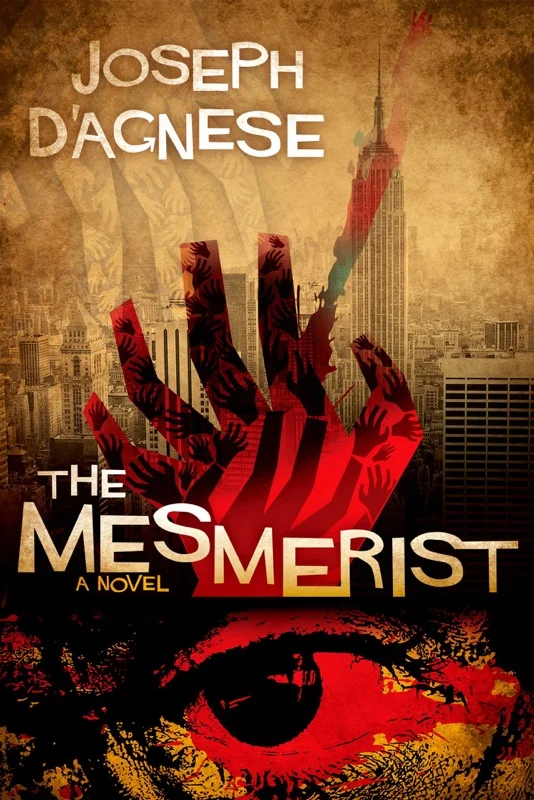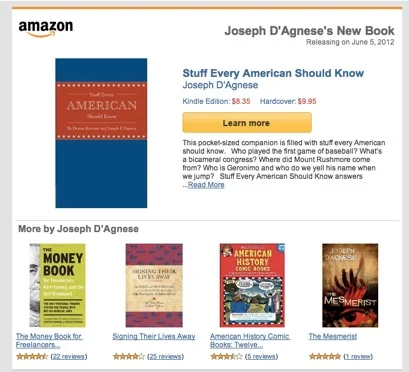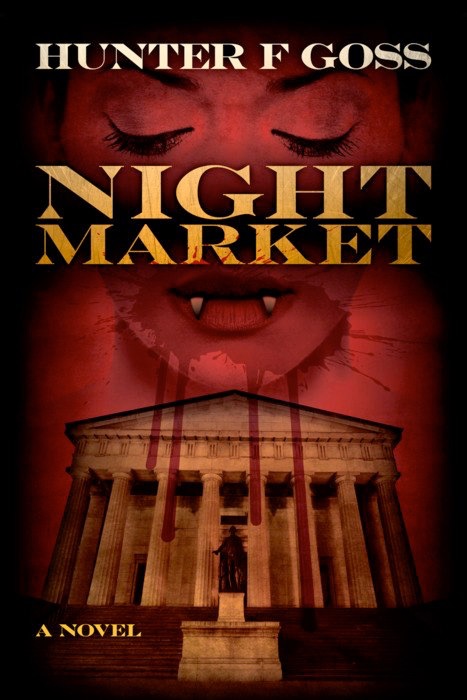The images behind any book appear first in the author’s mind. What do my main characters look like? How do I envision their homes, their world, their nightmares?
A writer can go weeks, months, or years carrying these visual images in his or her mind.
Then the cover artist appears on the scene, and pits his vision against the author’s, striving to create a look that will be highly compelling and marketable. In this occasional series, we’ll look at both sides of the development of an ebook cover. Who was thinking what — and when? Which came first, the author’s concept, or the designer’s?
Today we’re joined by Hunter F. Goss, author of Night Market, and cover designer, Jeroen ten Berge.
Night Market intrigues me because I’m a sucker for novels and thrillers that incorporate historical figures. I loved books such as E.L. Doctorow’s Ragtime, Caleb Carr’s The Alienist, both of which feature appearances by the financier J.P. Morgan. As far as I can recall, Morgan does not appear in T. Coraghessan Boyle’s The Road to Wellville, but that book’s fixation on food reminded me of some of the over-the-top dining scenes in Night Market. The nonfiction book Appetite City, by William Grimes, about the culinary world of old New York, also conjures up for me the feeling of sumptuous dining in Goss’s fin de siècle world, minus the vampires, of course. Let’s get to the interview.
What is your book about?
Goss: Night Market tells how and why the Undead helped the American financier John Pierpont Morgan rescue some of America’s largest banks during the Panic of 1907.
How did you pick your cover artist?
Goss: I looked at a lot of cover artists who were doing work for indie authors, but Jeroen ten Berge’s work stood out far and above the crowd. When I saw Jeroen’s cover for Steve Richer’s The Gilded Treachery, I knew he could connect with the sort of “what if” historical novel I’d written.
What instructions did you give him?
Goss: We exchanged a few emails, and Jeroen told me how he works. When I sent him a synopsis and manuscript to work with, I told him about two images I kept getting in my head. One was a kind of Wall Street Journal look, but we knew Mr. Murdoch wouldn’t be amused by this. The second image was that of a female vampire against some sort of Wall Street backdrop. I originally saw her as having her fangs bared and ticker tape for a tongue, but Jeroen didn’t think it fit with the book’s premise. He was right. After that, I just let him alone to do his work and the result is what we see here.
What did you like about the cover he created?
I really liked the central elements Jeroen chose to focus on: Veronica Fontera, one of my two protagonists, and a recognizable Wall Street landmark. That landmark is Federal Hall, which at the time Night Market takes place was being used as a gold depository called the Sub-Treasury. At the very beginning of the story, the Sub-Treasury’s reserves were being depleted by Europeans cashing in government bonds for gold. It was called the Gold Crisis, and the solution to it is what brings my other protagonist, Andrew Kirkland, and Veronica together.
Jeroen reinforced the idea of money and finance by using a font reminiscent of what we see on United States currency. He uses a serene image of Veronica with a splash of blood at her mouth that’s dripping down over the Sub-Treasury building, suggesting violence and the paradox she represents. The image is completed by the use of varying shades of red, playing up the gothic suspense elements of Night Market. All told, I’d say Jeroen hit the bull’s eye.
What reaction, if any, have you gotten about the cover?
Goss: Really positive. I actually showed it to two stockbrokers, who immediately “got” what the story is about just by looking at the cover. And that’s what any writer needs in order to sell a book. When my editor saw it, she was blown away. Then she told me we were going over the manuscript one more time. “One more time,” though, ended up being eight weeks before she said, “OK — publish it now.”
Can you tell us anything about yourself, particularly how amassed the knowledge of 19th and early 20th century economics to be able to pull off this book?
Goss: I grew up around the hide and leather business, and except for a couple of years in academia after graduation doing economic research, that’s where I spent most of my working life. I call it the most obscure and unglamorous corner of the fashion industry, but it gave me an opportunity to travel to a lot of places that end up appearing in my stories. Paris was one of those places, and some important scenes in Night Market are set there.
I left the business a few years ago when just too many of our customers decided it was a great idea to manufacture in low-wage countries. It didn’t pay to keep the operation going, and it wasn’t really fun anymore, so I got serious about the only other thing I’ve ever wanted to do: writing.
Besides papers for academic journals, some wine articles, and promotional material for leathers used at trade fairs, I’ve done some comic and graphic novel work for the European market under another name.
I live and hang out in the Rust Belt along the Pennsylvania-Ohio border. Pittsburgh is in one direction and Youngstown, Ohio is in the other.
Okay, so let’s switch over to Jeroen. What challenges did you face creating this cover?
ten Berge: I was immediately intrigued by the story, the fact that it mixes historical fact and characters with fictional ones, setting a stage for something that might actually be true. (Well, we now all accept Wall Street is rife with vampires, so it must be true!) Alternate history fiction, or “What if” fiction as Hunter calls it, has always fascinated me. Robert Harris’ Fatherland, which offers a scenario of Germany winning WWII with Hitler still ruling when the Beatles consider touring Berlin, is a prime example of the genre. One of my favorite books in the genre is Resurrection Day, by Brendan DuBois, set in the 1970s, after the Cuban Missile Crisis escalates to a full scale war, devastating Russia and leaving the United States reliant on aid from Great Britain. Both are fantastic reads and come highly recommended. But I digress.
The challenge for me was finding imagery that conveyed the story. I had the elements for the design in my head quite early on. Initially I looked for historical images of New York City and Wall Street, but aside from a few dainty old photographs there was nothing I could use. Then I stumbled on a current photo of Federal Hall I could potentially use. I photoshopped out modern-day trash, street lights, and a railing, to give it a sense of it being 1907. Veronica’s image was easier, as I used my wife for a model, bar the teeth. When I had those two key elements, the rest was pretty straightforward. I added fangs, blood, and text and then played around finding the best composition, most suitable typeface and a striking color scheme.
* * *
That’s it, folks. Night Market is available via Amazon and Smashwords. Thanks to Hunter and Jeroen for participating in this inaugural post on ebook covers.
Note: Both of my ebooks, designed by Jeroen, are on sale through the holidays for $0.99.





















